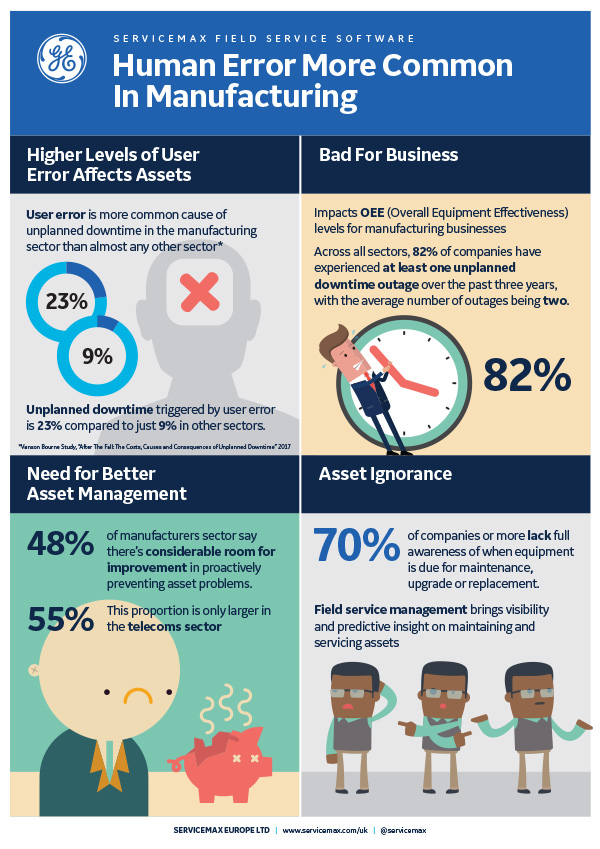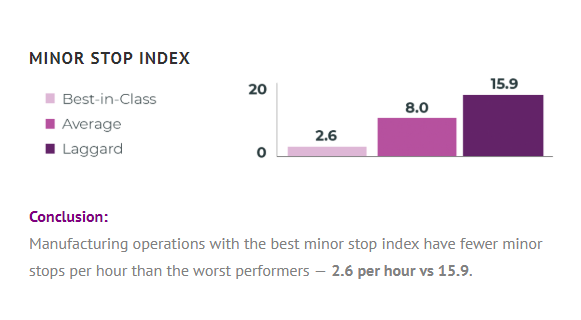I always get the feeling that there’s a lot of vagueness and fluff around the topic of AI , IIoT (Industrial Internet of Things), and industry 4.0 technologies in discrete manufacturing.
This probably has to do with these topics becoming popular buzzwords in the industry, as well as with the different offerings of related optimization solutions.
It could also be the result of knowledge gaps between technology vendors and potential buyers (plant managers and executives in the manufacturing ecosystem). The latter doesn’t necessarily have the tools to quantify the real value of IIoT optimization solution in solving day to day work challenges and its contribution to the bottom line, which is a pity.
It is clear to me that we as an industry haven’t fully unlocked the potential of these advanced technologies, and so it’s easy to understand why so many professionals remain confused (and hence send somewhat conflicting messages) about what AI-based IIoT software can change.
In some areas, we may be more tolerant towards less-than-clear explanations, but when it’s time for us to make a substantial financial investment, let alone add another solution to our data-systems integration mess, clear answers must be provided regarding the value of the solution we consider adopting.
A CFO who is being approached with a request for hefty budgets for adding Industry 4.0 or IIoT technology is likely to (rightfully) demand answers regarding the proof of ROI that these budgets are expected to bring in.
Bringing some evidence
When such questions arise, we better be prepared with numbers, use cases and facts. When we fail to come up with sufficient answers, the need for manufacturing optimization software doesn’t seem strong enough, and we lose the organizational support we seek.
In our journey to provide multiple evidence for the value of AI-based IIoT technologies, I’ve written this piece about the contribution of AI to Manufacturing Optimization including 5 Examples that demonstrate the value.
But I am well aware that although this sheds some light, it’s not enough to estimate the ROI.
In the following paragraphs, I try to describe in details the challenges we could face on our way to creating a more structured calculation model of the financial value that lies in manufacturing optimization technologies.
I will get into what is currently missing and offer some ways to try and predict an ROI frame.
The need for ROI
Because both AI-based and IIoT technologies (and their usage in the manufacturing arena) are still rather young, it’s not easy (to say the least) to come up with enough case-studies and proof to draw from.
Known benchmarks in this field are also in the making, and so one of the bigger challenges the industry is currently dealing with is defining clear numerical success parameters in order to build robust ROI calculation models.
It is not that advanced technologies are not yet in use or have not been proved to be beneficial. Multiple manufacturers are already highly dependent on IoT sensors, smart manufacturing software and predictive maintenance based on AI tools, as we’ve seen in these use cases.
But turning these specific metrics into a general model is a different kind of a challenge.
Being able to at least predict the ROI is even more important, considering the (sometimes) overly conservative and hesitant approach taken by some in the manufacturing industry.
Factories suffer gravely from being late to embrace and implement the latest technologies that are built to answer a real need: the need to survive in the growing, competitive landscape, and the need to scale up production while reducing pricing, yet without compromising on quality. A clearly impossible mission without adopting advanced technologies and driving factory innovation.
Manufacturers not only fear security, integrations and implementation headaches; they mainly don’t really understand how these solutions can define their success or failure in the near future.
When you don’t fully know what you have to lose should you fall behind, it often means that you will be late to embrace new technologies.
The ROI serves as the main engine on this journey, and it can simplify our decision-making processes. If I can clearly understand what’s in it for me, I will be much more proactive towards joining the game.
Calculating success
Can the industry potentially work with concrete calculation modules to predict the ROI of specific IIoT-AI-based optimization solutions? Generally speaking, the answer should be yes.
These modules, however, demand deeper analyses and customizations based on each factory’s (or manufacturing type) needs, in order to reach the required accuracy.
Once again, as our industry grows and matures (like any other industry), we’ll have many more use cases to research and should be able to build generic modules that will require shorter analysis procedures. We may not be there quite just yet, but we are well on our way.
Here’s what pros in the industry tend to do, in the meantime:
IIoT ROI building blocks
One important step on the way to efficient module creation is understanding the foundations upon which these calculations are made. In other words: in which areas can manufacturers benefit from IIoT and AI-based optimization solutions?
- Increased productivity: Optimization systems enable factories to boost their productivity by optimizing work resources, prevent issues, speeding up production processes and much more. By predicting events, these tools offer factories enough time to prepare in advance, freeing more space to focus on business growth and new challenges. Simply put: they help fewer workers reach much larger and otherwise impossible production scales.
- Improved quality: In technology we trust, and it assures that we reach the best results even at greater scales, allowing us to perfect each process over time. Reduced human errors are incredibly valuable in any manufacturing, let alone discrete manufacturing, where products are not only very expensive but also usually have a massive impact on consumers’ lives.
Being able to minimize errors in the aerospace and medical industries, for example, is priceless (but still presents a clear ROI).
- Increased equipment and machines OEE: Optimization helps manufacturers make the most out of their pricy equipment and tools. Predictive maintenance enables a different level of understanding of availability issues and planned or unplanned stops, which can significantly improve the factory’s workflow, eliminate bottlenecks, machine waiting for material, stop delays in deadlines and so forth.
- Cost reduction: Simply put, by making the most out of the materials (material saving), floor space and personnel they work with, factories are able to waste far less time, resources and money.
- Reduced time-to-market: To boost profitability, factories must go from planning to executing in far less time. Simply being able to use AI i to predict the challenges we might face in realizing a new product is a lifesaver (and a major money saver).
- Quality cost reduction: As previously mentioned, one main challenge in manufacturing optimization is being able to cut costs (and increase production) without compromising on quality whatsoever. AI and IIoT-based tools are the main answer to this need.
- Increased flexibility: Today’s markets shift faster than ever, and manufacturers struggle to meet changing market demands. By leaning on advanced technologies, factories are able to respond quickly, optimize scheduling, combine work orders that use the same material and offer real-time solutions that boost profitability.
Some known benchmarks to get you started:
Each of these impact areas should be examined from an ROI-driven perspective while detailing the exact percentage of change we can – and should – expect to experience. We can take into account the followings:
- Accelerated delivery time and reduced time to market: How much do delays in delivery cost your business? How much would you gain if you could dramatically reduce delivery times? Some researches reported a 10-15% decrease in delivery time. This refers both to new products entering the market as well as delivery times for existing customers.
- Reduced errors and risk: A SaaS optimized system can minimize risk by 70-75%, which includes reduced downtime and latency, legal fees, quality related re-work, PR-crisis, and more. The cost of one major mistake can skyrocket, considering the many implications it carries.
For example, this comprehensive study from 2017 found that at least 70% of the companies interviewed were lacking full awareness of when equipment is due for maintenance, upgrade or replacement. In other words, 70% of manufacturing companies could work to identify human errors, downtime and more, estimate the related losses, and then easily calculate the ROI of optimization solutions.
- Materials and machinery costs: By optimizing material utilization and practicing preventive maintenance, manufacturers can cut their costs by 10-40%. We’ve seen examples where AI-based cut planning can improve material saving by 20%!
A study found that an average production line stops 20,000 times per year! In that sense, optimized lines can be 6 times better than poor ones.
Running an ROI analysis of your own – a suggested recipe:
So now that you have some ideas for the optional areas of optimization, including a better understanding of known benchmarks around them, you can try and make an analysis of your own according to these steps:
- Identify your specific objectives: Are you after increasing throughput? Do you need to reduce production costs? Are you bothered by your time-to-market performance parameters?
- Add a target next to each of the identified prioritized objectives (how much in percentages do you wish to improve using optimization systems). Consider the difference between the present and the future (a robust solution will help you scale up throughput without significantly increasing workforce or machinery, for instance).
- Do this for areas that will improve your profitability even if you did not prioritize them. There are indirect parameters, such as increasing the efficiency of your existing workforce (workforce efficiency should grow by 20% with a strong solution at your side. This may save you the need to increase your number of employees). Calculate rework optimization, material expiration or any other factors that can be optimized using the specific software solution you are about to onboard (check out ours here).
- Based on your (known) production scale and annual revenues level you can estimate the saving around each of the areas defined above.
- Now, in order to complete your ROI estimation, it’s time to calculate the investment – indirect and direct costs around the implementation of the IIoT software and hardware (sensors). Some vendors will support you more than others. Plataine, for instance, offers a dedicated ‘professional services’ team that supports you with the implementation and onboarding, plus training.
Your investment must be deducted from the calculated savings (above).
Summary
I wish we could find a way to publish an online calculator that would offer a detailed ROI model for implementing an AI-based IIoT SaaS for manufacturing optimization, based on just a few parameters that professionals could easily enter.
Well, even though we are gearing up towards building such a calculator, we are not quite there yet.
But meanwhile, in this article I tried to offer you a walk-through of the steps you can take in order to create your own specific estimation.
Using these benchmarks and tips, you can come prepared for the discussion with all other decision-makers in your organization, and make them see the clear benefits that the entire organization will enjoy.











